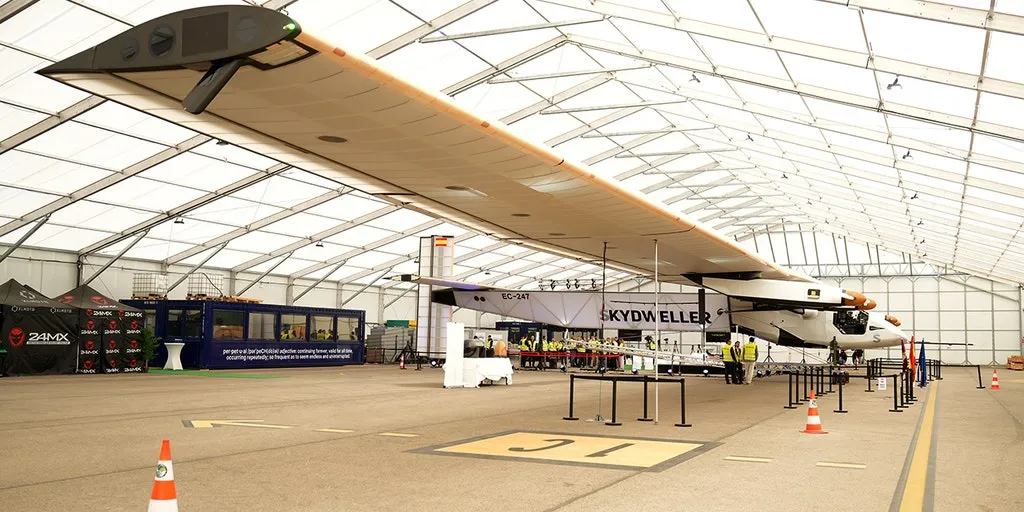Steve Doocy discusses his trip to Hunstville, Alabama touring Performance Drone Works' brand new drone facility.
The Navy, working with Skydweller Aero, just reached a major milestone in clean-energy aviation. Its solar-powered drone, known as Skydweller, flew for 73 hours straight without needing fuel. The test happened at Stennis, Mississippi, under the leadership of the Naval Air Warfare Center Aircraft Division (NAWCAD).
This breakthrough shows how renewable energy can power long-endurance missions while cutting costs and reducing reliance on fuel.
The three-day nonstop flight proved that solar-powered drones can store enough energy during daylight to keep flying through the night. Engineers confirmed that Skydweller not only stayed airborne but also handled real-time autonomous decisions, adapted to turbulent weather and maintained secure communications.
Officials say the drone's wingspan matches that of a Boeing 747, yet it weighs about as much as a Ford F-150. With solar panels covering its massive wings, Skydweller powers four electric propeller engines during the day while storing extra energy in batteries for night flights.
NAWCAD leaders say Skydweller will fit into the Navy's intelligence, surveillance and reconnaissance (ISR) network. Unlike expensive satellites or large drones such as the Global Hawk, Skydweller offers commanders a cheaper option for persistent monitoring. It can hover over an area in what experts call a "pseudo-satellite role," freeing up more advanced systems for priority missions.
For U.S. Southern Command, Skydweller could help track drug trafficking, border security threats and other maritime challenges. Longer tests are already planned for this summer in the SOUTHCOM region, which covers Latin America and the Caribbean and oversees U.S. military operations in that area.
While Skydweller has already logged nearly 220 flight hours, engineers believe it could stay airborne far longer. Weather and range limits kept this recent test at 73 hours, but in theory, the aircraft could remain aloft for weeks.
The Department of Defense sees platforms like Skydweller as vital for future conflicts where fuel resupply may not be possible. Renewable-powered drones could solve logistics headaches, especially in contested environments, which essentially means operating in places where enemies can block supply lines and make traditional refueling too risky.
The Navy's solar drone test is proof that renewable energy can support technologies once thought impossible. If solar power can keep an aircraft in the air for days, similar advances may eventually reach consumer tech, disaster relief and even commercial aviation. Imagine cheaper, cleaner systems that can operate nonstop without fuel.
The Navy's solar-powered flight shows how far clean energy technology has come. By proving that drones can fly for days without fuel, the Navy highlights a future where endurance and efficiency go hand in hand. This milestone also points to practical uses beyond defense, from disaster response to global communications. As testing continues, the focus will shift from what is possible to how long these systems can stay airborne and how widely they can be deployed. The next step may redefine how we think about surveillance, security and renewable energy in the skies.
